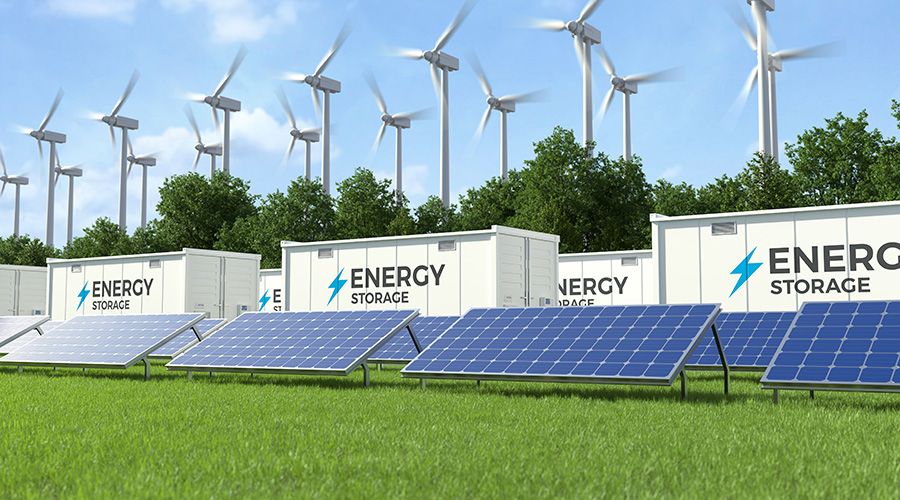Stock Up on Energy Savings
Warehouses offer energy opportunities inside and out. Three places to look: lighting, roofing and HVAC
Because warehouses are perhaps the least glamorous type of building in a facility executive’s inventory, they often represent missed opportunities for implementing energy efficiency strategies.
With a little research into new lighting, roofing and HVAC technologies, however, facility executives can find ways to reduce the cost of operating warehouses.
With lighting, experts say start by asking two questions: How much light is really necessary in the warehouse and where is it needed? Automated warehouses, where there is little human activity, require much less lighting than a fully staffed facility. Also, a clerk’s station requires a different kind of lighting than a warehouse floor.
“Think about how warehouses work. Many don’t have people in them,” says Lindsay Audin, president of Energywiz Inc., an energy consulting firm. “There are robotic warehouses with automated trolleys and robotic forklifts that can operate in the dark.”
 One question energy-conscious facility executives should consider is whether to use high-intensity discharge (HID) fixtures or fluorescent high-bay fixtures. Many of the latter type of products on the market now cater to industrial applications, Audin says. Upfront, this isn’t always the least expensive option, “but you will gain the savings back over time,” says Tim Geisler, senior project manager for the Missner Group, a contractor and real estate development company.
One question energy-conscious facility executives should consider is whether to use high-intensity discharge (HID) fixtures or fluorescent high-bay fixtures. Many of the latter type of products on the market now cater to industrial applications, Audin says. Upfront, this isn’t always the least expensive option, “but you will gain the savings back over time,” says Tim Geisler, senior project manager for the Missner Group, a contractor and real estate development company.
Fluorescent fixtures turn on immediately, eliminating the warm up time of HID lighting. This long warm-up cycle often is the reason for leaving the HID lamps on even when the light isn’t needed, he says.
The downside to fluorescent lamps is that light output might be less than some HID systems, such as metal halide, and historically, fluorescent products have a shorter life than HID lamps. With recent advances in fluorescent technology, however, the gap is closing, Geisler says.
Dimmers and motion sensors improve lighting efficiency on both types of systems. “There are systems for area-wide dimming,” Audin says. “These systems have matured in the last few years. It’s a handy way to quickly and cheaply reduce light output, without having to touch the fixture. They allow you to keep the light on, but reduce output. It involves attaching a panel, which is much cheaper to install.”
For fluorescent systems, a combination of dimmers and motion sensors can be used to create a low blanket of light over an area that then brightens where people are working, Geisler says. Motion sensors also extend lamp life.
One way to improve light levels while reducing energy expenses is simply by keeping the fixtures clean, says Jess Knigge, senior project manager for the Missner Group.
Painting walls white and installing windows and skylights to introduce natural light help too, Knigge says. Skylights are becoming commonplace because of exhaust requirements, but the light they bring in is an extra benefit. Thermal glass in the skylights can help maintain climate control.
Next to lighting, a warehouse roof can be one of the biggest sources of energy inefficiency, experts say. Warehouse roofs are notorious for soaking up solar heat. While a facility’s ability to absorb heat might be advantageous for some facilities in the winter, it often means wasted money overall.
Depending on the warehouse’s purpose, cool roof technologies could cut down on energy costs. Cool roof systems have two critical properties: a high solar reflectance, which means they absorb less energy from the sun, and a high thermal emittance, which means they radiate a large percentage of the energy they do absorb back to the sky.
Regardless of climate, cool roof technologies are highly beneficial for warehouses with refrigeration storage. These facilities demand consistent year-round cooling regardless of location, says Hashem Akbari, group leader of the Heat Island Group at Lawrence Berkeley National Laboratory. Cool roofing technologies can improve energy efficiency in these facilities by 5 to 10 percent.
Dry storage warehouses typically don’t have refrigeration year round, but still require a consistent temperature. In these settings, cool roofing systems can contribute an even higher percentage of cost savings, Akbari says. In buildings with no air conditioning, cool roof systems make the building more comfortable for workers.
Since refrigeration and air conditioning are heavy strains on the power grid, cool roofing technologies can reduce peak demands and improve the load on the utility grid, he says.
While cool roof technology can reduce energy consumption in the summer, it also can increase energy consumption in the winter.
“In the winter there is value in heat gathering,” Audin says. “You need to model the behavior of the building in all climates. When considering a roof change, you need to look at the overall impact. Depending on where you are, you might lose energy more by getting rid of heat.”
In calculating the energy savings from reduced cooling load and the energy penalty from reduced winter heat gain, it’s important to take into account rising costs of both heating fuel and electricity.
While cool roofing technologies can reduce cooling costs, not all products are created equal. Energy Star roofing and coating products are good reflectors of solar heat, but not all coatings are compatible with all existing roof types. When selecting a cool roof, make sure the installer is experienced with the product selected, Audin says.
Other Cost Saving Ideas
While improving lighting and roofing functionality go a long way toward saving energy, there are other things that facility executives can do to further cut back.
The HVAC system is a huge drain on energy. Not all areas of a building require climate control at all times. If the warehouse is automated or unoccupied much of the time, evaluate the level of heating and air conditioning really necessary to make the environment comfortable or store the company’s product.
Other HVAC Options
Also think about ventilation, when the stored product requires air exchange.
“Outside air can be expensive,” Audin says. “If you have to ventilate, think about how you’re going to recover exhaust. What are you doing to recover the cooling or heating?”
Using a desiccant wheel to dry the air before it enters the HVAC system is one way to improve energy efficiency. About 30 to 50 percent of all air conditioning energy is used to remove moisture from incoming air. As the desiccant wheel spins, it absorbs moisture, drying the air before it enters the facility. Dry air is easier to cool than moist air, Audin says.
Ice storage systems are another way to reduce air conditioning costs. Ice storage systems freeze water at night when off-peak electricity rates are in effect. During the day, a refrigerant circulates through coils in the ice, then into the air conditioning system.
Oversized ceiling fans also help to reduce cooling bills, particularly in buildings prone to stratification, where hot air settles on top and cold air settles on bottom. Ceiling fans, which can range from 6 to 20 feet in diameter, stir the air to keep the temperature even.
Dock shelters which enclose the entire back of a truck are more energy-efficient than roll-up dock doors because they reduce outside air exchange. Dock shelters most likely won’t be found in warehouse facilities built on spec because they’re more expensive than typical loading docks. However, if facility executives have the opportunity for a build-to-suit facility, this is an option to consider, Geisler says.
ANOTHER OPPORTUNITY
Insulation Saves Energy, Too
Installing more insulation is a proven way to reduce both heating and cooling costs, says Tim Geisler, senior project manager for the Missner Group. Some state governments even understand the value of more insulation. The new Illinois energy code, for example, which went into effect in April, requires a higher R-value.
The best time to install insulation is when the warehouse is being built or renovated, or during roof replacement. If the roof is going to be recovered, a moisture barrier can be applied over the existing membrane, followed by installation of new insulation and the new membrane. A spray-polyurethane roof is another way to add insulation to a roof, either in new construction, roof replacement or roof recovering.
Geisler also recommends removing any unused rooftop equipment, capping off the openings and insulating walls for maximum
efficiency.
— Lynn Proctor Windle
|
Lynn Proctor Windle, a contributing editor for Building Operating Management, is a freelance writer who has written extensively about real estate.
Related Topics:












